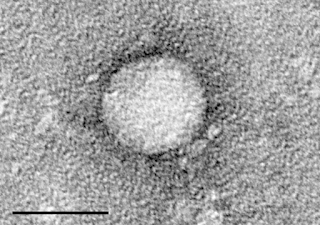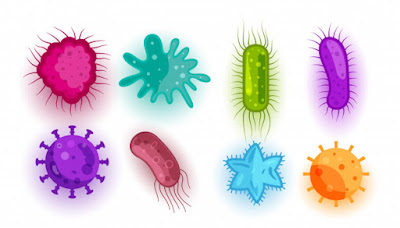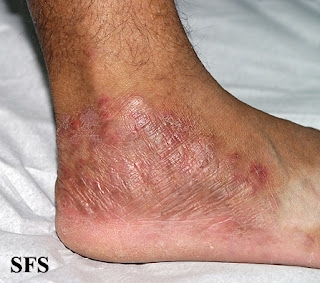Virus, Bacteria and fungi
The aim of this artical is to introduce you with some germs you know them as Bacteria, virus and fungi if you read this artical carefully, you'll be able to:
- Identify groups of microorganisms (virus, bacteria and fungi) with examples for every of them.
- Describe the benefits and drawbacks of microorganisms in lifestyle.
Our Earth, there's a spread of organisms, both microscopic, and macroscopic. Macroscopic organisms are visible to the eye like animals and plants, but some organisms are so tiny that they will only be seen under a microscope. We call them microorganisms or microbes. The term "microorganism" springs from two words, "micro" meaning "very small" and "organism" meaning a "living thing". There are many microorganisms living everywhere around us, performing a spread of important functions. Many diseases are caused by these organisms. In simple terms, we call them germs, If these germs enter our body by any means, they cause us to become sick. Germs also are called pathogens.
Therefore, it's important to wash our hands before we eat. it's also the Sunnah of our beloved Prophet (S A W).
Main groups of miroorganisms
There are many diseases that spread from person to person or through microbes. Scientists classify these microbes into three groups on the idea of their shape, structure, feeding habits, etc. These are given below:
- Viruses
- Bacteria
- Fungil
Virus
Viruses are very tiny organisms not visible to the eye. They are available in several shapes. They will survive outside, but they have to enter the living cells of other organisms to breed. The organism during which an epidemic reproduces is named a number. Viruses don't make their own food but depend upon other living cells, which is why they're called parasites. They multiply rapidly in warm and moist places. Viruse may be a Latin word sense poison. So, they are completely harmful and infect the host cells. Some viral diseases include
- Measles
- Mumps
- Checkenpox
- Hepatitis
 |
| Hepatitis C virus |
TIP TO PREVENT AGAINST GERMSWhenever you cough or sneeze, you should use a handkerchief to stop germs from spreading into the air.
Bacteria
Bacteria are small, unicellular organisms present all around us and may only be seen with the assistance of a microscope. Bacteria are different shapes, i.e. rod, spiral, round, etc. Some have a tail-like structure called flagella, which helps them to swim as shown below.
 |
| Different shapes of Bacteria |
Louis Pasteur (1822-1895), a French bacteriologist, proved microorganisms cause infectious diseases. He developed vaccines and discovered pasteurization, the process of killing bacteria in food by heating.
Bacteria grow and reproduce outside or within the body and cause infections. They grow and multiply rapidly, and make us ill. Some common infections caused by bacteria are:
- Mouth sore
- Cavity and tooth decay
- Ear infection
- Cholera
- Typhoid
- Gastrointestinal disorders
Some bacteria are useful to humans. For example, useful bacteria live in our intestine and help us to use important food nutrients and aid in digestion.
Have you noticed curds in milk, if you retain it outside the fridge without boiling? What does one think why it happens.
TIP TO PREVENT AGAINST GERMSIf you wash your hands before meal and also wash when you attend wash room, you will be safe from 90% viral and bacterial infections.
Fungi
Take any food item containing some moisture and keep a cupboard. Then observe it after a couple of days; will get fungus.
Fungi are multicellular organisms. There are dlfferent sorts of fungi. They also exist during a sort of different sizes starting from microscopic to macroscopic. Moulds and yeast are common samples of microscopic fungi, while mushrooms are macroscopic fungi.
Fungi look like plants, but they can't make their own food as plants do. Instead, they consume living or dead, decaying matter by making them rot. They're found on rotting food, like bread, vegetables, fruit, etc. Fungi develop very quickly when conditions are favourable, i.e. damp and moist. Most fungi are harmless, but some cause disease. A standard disease caused by fungi is tinea pedis also known as athlete's foot.
 |
| Tinea pedis (Infection of a fungus) |
Healthy tinea pedis Infected
Bacteria and fungi are natural decomposers; without these the dead bodies of organisms would still remain on Earth and there would be mess.
Advantages and disadvantages of microorganisms
Some microorganisms are beneficial and a few are harmful. Some advantages and disadvantages of microorganisms are given below.
Advantages of microorganisms
A. Help in digestion
Many bacteria live in the human intestine and aid in digestion of food.
B. Keep nitrogen in balance
Bacteria help to stay the balance of nitrogen within the atmosphere. Such bacteria are called nitrogen-fixing bacteria.
C. Vaccine making helper
Some microorganisms are used for creating vaccines. A vaccine may be a synthetic substitute used to provide immunity against one or several diseases. Examples are polio and BCG vaccines.
D. Help in food production
Different microorganisms are utilized in the assembly of various food items. For examle, yeast may be a fungus utilized in making bread and cheese, while bacteria help in making yoghurt.
E. Help in making medicines
Microorganisms like fungi are used to obtain different antibiotics. They're medicines that inhibit the expansion of or destroy microorganisms which cause disease in humans and animals.
Disadvantages of microorganisms
A. Spoilage of food
Microorganisms spoil food and make food stale for human use. Examples are, the expansion of mould spoils and rots bread,fruit and vegetables.
B. Disease causing
Microorganisms cause disease are called germs. They will enter the body through various paths such the nose and mouth. Once you breathe, eat or drink, or they will ever enter the body through wounded skin. Samples of bacterial diseases are bronchitis, typhoid, food poisoning, etc. Fungi cause disease in humans, plants and animals. In humans, fungi cause ringworm, and in plants they causes smut in wheat and rice.
Some viral diseases are the cold, polio, herpes zoster, influenza, etc.
Do you know what causes tooth cavities?
Bacteria form a sticky, colourless film called plaque that constantly forms on our teeth. It's liable for infection in our gums and cause cavities and tooth decay, and may harden into tartar if not removed daily.
KEY POINTS
- Microorganisms are living bodies that can't be seen with the eye and may only be seen under a microscope.
- Diseases are caused by harmful microorganisms called germs. Microorganisms are classified as viruses, bacteria and fungi.
- Viruses are very tiny organisms not visible to the eye. They are available in several shapes.
- Bacteria are unicellular organisms, having both harmful and beneficial effects.
- Fungi are multicellular organisms.
- Moulds and yeast are common samples of microscopic fungi, while mushrooms are examples of macroscopic fungi.




0 Comments